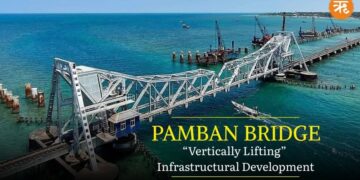Chandrashekhar Azad: A Revolutionary Hero
Chandrashekhar Azad, born on July 23, 1906, in Jhabua district of Madhya Pradesh, was a prominent revolutionary in the Indian freedom struggle. Disillusioned by Gandhi’s decision to halt the non-cooperation movement, Azad turned to revolutionary activities. He united various revolutionary parties in North India to form the Hindustan Socialist Republican Association. Azad, alongside Bhagat Singh, avenged Lala Lajpat Rai’s death by killing British officer Saunders in Lahore. On April 8, 1929, under Azad’s leadership, Bhagat Singh and Batukeshwar Dutt detonated a bomb in Delhi’s Central Assembly, protesting against oppressive British laws without intending to harm anyone. On February 27, 1931, Azad killed five British police officers. True to his vow that the British would never capture him alive, Azad shot himself after the incident, securing his place as a legendary figure in India’s fight for independence.
Chandrashekhar Azad was born on July 23, 1906
– He formed the Hindustan Socialist Republican Association
– Azad shot five British policemen and then shot himself
Lokmanya Bal Gangadhar Tilak: A Stalwart of Indian Independence
Lokmanya Bal Gangadhar Tilak, born on July 23, 1856, in Ratnagiri district of Maharashtra, was a nationalist, teacher, social reformer, lawyer, and freedom fighter. He founded two influential newspapers, Maratha and Kesari, which became popular for their sharp criticism of British rule and defense of Indian culture. His articles in Kesari led to multiple arrests by the British government. In 1908, Tilak was arrested on charges of treason and imprisoned in Mandalay Jail, Burma, from 1908 to 1914. He passed away on August 1, 1920, coinciding with the launch of the Non-Cooperation Movement. To honor his contributions, Gandhi established the Tilak Fund, and in 1956, the Indian government issued a postage stamp in his honor.
Lokmanya Bal Gangadhar Tilak was born on 23 July, 1856
– Tilak was a nationalist, teacher, social reformer, lawyer and a freedom fighter
– He started two daily newspapers named Maratha in English and Kesari in Marathi
– In the year 1956, the Government of India issued a postage stamp in his honor
National Broadcasting Day: Celebrating the Legacy of Radio in India
National Broadcasting Day is celebrated on July 23 every year in India, marking the first radio broadcast by the Indian Broadcasting Company from Bombay station on July 23, 1927. This day highlights the significance of radio and raises awareness about its usage. Radio broadcasting in India began in the 1920s, with the first program airing in 1923. In 1927, radio stations were established in Mumbai and Kolkata. By 1930, the government took over these stations, renaming them Indian Broadcasting Service, which later became All India Radio in 1936 and Akashvani in 1957. At independence, India had nine radio stations, but post-partition, three were allocated to Pakistan. Initially, radio reached only 11% of India’s population. Today, radio reaches 99% of the population through 262 stations, and Akashvani broadcasts in over 25 languages to more than 100 countries.
On July 23, 1927, the Indian Broadcasting Company made the first radio broadcast from Bombay station
– Radio broadcasting in India began in the 1920s
– In 1936, the Indian Broadcasting Service was renamed All India Radio
The Birth of the Typewriter: William Austin Burt’s Innovation
On July 23, 1829, William Austin Burt patented the typewriter, known as the “typographer.” This early prototype of the modern typewriter featured a rotating cylinder and a letter wheel. The user would rotate the wheel to select a letter and then press a lever to print it on paper. Although the typographer was slow and not widely adopted commercially, it was a crucial step in the evolution of typing technology. Burt’s invention aimed to improve document writing speed and accuracy and inspired future advancements in typewriters.
The typewriter was patented by William Austin Burt on July 23, 1829
– Typewriter had a rotating cylinder and a wheel for letters
– It played an important role in the development of typing technology
### Ford Motor Company’s First Car Sale
On July 23, 1903, Ford Motor Company sold its first car, the Ford Model A, to Ernest Pfennig, a dentist from Chicago. Founded by Henry Ford on June 6, 1903, the company has become renowned worldwide for its vehicles and automotive services. Ford’s innovations include the introduction of the Model T in 1908 and the world’s first moving assembly line for cars in 1913. During World War II, Ford manufactured the Jeep for the US Army. Over a century, Ford has become a leading vehicle manufacturer, producing over 350 million cars from the Model T to the latest models.
On July 23, 1903, Ford Motor Company sold its first car
– The first car of Ford Motor Company was named Ford Model A
– This car was bought by Ernest Pfennig, a dentist from Chicago
















Comments